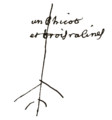Great Peace of Montreal facts for kids
| La Grande paix de Montréal | |
|---|---|

Copy of the treaty including signatures
|
|
| Signed | August 4, 1701 |
| Location | Montreal, Quebec, Canada |
| Signatories | |
| Languages |
|
The Great Peace of Montreal (French: La Grande paix de Montréal) was an important peace treaty. It was signed between New France and 39 different First Nations groups in North America. This treaty officially ended the long-lasting Beaver Wars.
The treaty was signed on August 4, 1701. Louis-Hector de Callière, the governor of New France, and 1300 representatives from 39 Indigenous nations were present. The French, who were allies with the Hurons and Algonquins, helped bring about 16 years of peace and trade. This peace lasted before another war began. Many different groups attended this historic event. These included parts of the Iroquois confederacy, the Huron peoples, and the Algonquin peoples.
This agreement is sometimes called the Grand Settlement of 1701. It has also been known as La Paix des Braves, which means "The Peace of the Braves".
Contents
The Fur Trade Wars
The city of Quebec was founded in 1608 by Samuel de Champlain. He was one of the first governors of New France. This marked the start of French traders collecting resources from the northern forests. Control over the fur trade became very important for Native American tribes. Each tribe wanted to be the main partner for the Europeans.
These conflicts were known as the "Fur Wars." The Hurons and Algonquins, supported by the French, fought against the powerful League of Five Nations. The Iroquois were first supported by the Dutch in New Netherland. Later, they were supported by the English when they took over New Amsterdam in the 1660s and 1670s. The English renamed it New York City.
In the early 1600s, the Iroquois, allied with the Dutch, gained a lot of land. They often threatened French settlements like Montreal and Trois-Rivières. To protect the colony, the Carignan-Salières Regiment was sent to New France in 1665. Their actions in 1666 forced some Mohawk communities to make peace.
A time of growth followed for France's colony. However, the Iroquois, now supported by the English, kept expanding their land. They fought French allies in the Great Lakes region. This again threatened the French fur trade. In the 1680s, the French became actively involved in the fighting. They and their Indigenous allies gained ground against the Iroquois. They even went deep into Iroquois territory. After a terrible raid by the Iroquois on Lachine in 1689, England joined the Nine Years' War. This war was known as King William's War in the English colonies.
Governor Frontenac then organized raids against English communities. These raids were along the border with New France. French and English colonists, along with their Indigenous allies, fought a long border war. This war officially ended when the Treaty of Ryswick was signed in 1697. However, this treaty did not solve the issue of Iroquois independence. Both France and England claimed the Iroquois were part of their empires. French allies in the upper Great Lakes continued to fight the Iroquois.
Steps Towards Peace
The success of these attacks, which again reached deep into Iroquois land, and the English's inability to protect them, made the Iroquois seek peace more seriously. Their population was shrinking due to conflicts and diseases. This put their very existence at risk. At the same time, trade almost stopped because fur prices dropped. Indigenous people preferred to trade with New York merchants. These merchants offered better prices than the French.
Early talks happened in 1698 and 1699. But these were partly stopped by the English. The English wanted to prevent the Iroquois from talking directly with the French. After another successful attack into Iroquois territory in early 1700, these attempts failed. The first meeting between the French and Iroquois took place in Iroquois territory at Onondaga in March 1700.
In September of the same year, a first peace treaty was signed in Montreal. This was with the five Iroquois nations. Thirteen First Nations symbols are on that treaty. After this first agreement, it was decided that a larger meeting would be held in Montreal in the summer of 1701. All nations of the Great Lakes were invited. French messengers, religious leaders, and soldiers, who were well-liked by the First Nations, were given this important task. Talks continued while waiting for the big conference. The neutrality of the Five Nations was discussed in Montreal in May 1701. The Great Peace of Montreal treaty, signed from July 21 to August 7, 1701, became a symbol of peace. In the treaty, the Five Nations agreed to stay peaceful between the French and the British during times of war. It was a great example of peace and honoring an agreement between different nations.
Signing the Treaty
The first groups arrived in Montreal at the start of summer 1701. They often had long, difficult journeys. The treaty was not signed right away. Discussions between the First Nations representatives and Governor Callière went on for a while. Both sides wanted to negotiate as much as possible.
The actual signing happened on a large field prepared for the special event. It was just outside the city. Representatives from each Nation placed their clan's symbol at the bottom of the document. These symbols included a turtle, wolf, or bear. A big feast followed the serious occasion. A peace pipe was shared by the chiefs. Each chief spoke about peace in turn. This treaty was made through talks, following First Nations diplomatic customs. It was meant to end conflicts between different groups. From then on, talking would be more important than fighting. The French agreed to help settle disagreements between the tribes who signed the treaty. The Iroquois promised to stay neutral if the French and English colonies fought.
What Happened Next
The treaty was very important for the Indigenous nations. The "Tree of Peace" was now planted among all the Great Lakes nations. Trade and exploration began again peacefully after the treaty was signed. The French explorer Antoine Laumet de La Mothe, Sieur de Cadillac left Montreal to explore the Great Lakes region. He founded Fort Pontchartrain du Détroit (now Detroit) in July. Jesuit priests continued their spiritual work in the north.
The Great Peace of Montreal is a special diplomatic event in the history of North America. The treaty is still considered valid by the Indigenous people of the American First Nations tribes involved. The French, in their negotiations, followed their usual way of dealing with some Indigenous peoples. Their relationship was often based on mutual respect, admiration, dialogue, and negotiation. The historian Francis Parkman once said: "Spanish civilization crushed the Indian; English civilization scorned and neglected him; French civilization embraced and cherished him."
Who Attended and Signed
- Haudenosaunee
- Onondaga, Seneca, Oneida and Cayuga, represented by Seneca speakers (Tekanoet, Aouenan, and Tonatakout) and by Ohonsiowanne (Onondaga), Toarenguenion (Oneida), Garonhiaron (Cayuga), and Soueouon (Oneida), who signed.
- Mohawk, Teganiassorens
- Sault St. Louis (Kahnawake) Mohawk, represented by L'Aigle (The Eagle)
- Iroquois of La Montagne, represented by Tsahouanhos
- Amikwa (Beaver People), represented by Mahingan, and spoken for by the Odawas in the debates
- Cree, or at least one Cree band from the area northwest of Lake Superior
- Meskwaki (the Foxes or Outagamis), represented by Noro & Miskouensa
- Les Gens des terres (Inlanders), possibly a Cree-related group
- Petun (Tionontati), represented by Kondiaronk, Houatsaranti and Quarante Sols (Huron of the St. Joseph)
- Illinois Confederation, represented by Onanguice (Potawatomi) and possibly by Courtemanche
- Kickapoo (attendance is disputed by Kondiaronk)
- Mascouten, represented by Kiskatapi
- Menominee (Folles Avoines), represented by Paintage
- Miami people, represented by Chichicatalo
- Miamis of the St. Joseph River (Sakiwäsipi)
- Piankeshaw
- Wea (Ouiatenon),
- Mississaugas, represented on August 4 by Onanguice (Potawatomi)
- Nippissing, represented by Onaganioitak
- Odawa
- Sable Odawas (Akonapi), represented by Outouagan (Jean Le Blanc) and Kinonge (Le Brochet)
- Kiskakons (Culs Coupez), represented by Hassaki (speaker) and Kileouiskingie (signatory)
- Sinago Odawas, represented by Chingouessi (speaker) and Outaliboi (signatory)
- Nassawaketons (Odawas of the Fork), represented by Elaouesse
- Ojibwe (Saulteurs), represented by Ouabangue
- Potawatomi, represented by Onanguice and Ouenemek
- Sauk, represented by Coluby (and occasionally by Onanguice)
- Timiskamings from Lake Timiskaming
- Ho-Chunk (Otchagras, Winnebago, Puants)
- Algonquins
- Abenaki, represented by Haouatchouath and Meskouadoue, likely speaking for the entire Wabanaki Confederacy
Images for kids
-
Mark: Wader.
Ouentsiouan signed for Onondagas. -
Mark: Turtle.
Tourengouenon signed for Senecas. -
Mark: A standing stone between a fork.
Signed for Oneidas. -
Mark: Great Pipe.
Signed for Cayugas. -
Mark: Rat.
Kondiaronk signed for Huron-Wyandot. -
Mark: Bear.
Kinongé signed for Sable Odawas. -
Mark: Bear.
Outaliboi signed for Sinagos Odawas. -
Mark: Fish.
Kileouiskingié signed for Kiskakons. -
Mark: A fork.
Elaouesse signed for Nassawaketons (Odawas of the Fork). -
Mark: Thunderbird.
Onanguice (Potawatomi) signed for Mississaugas. -
Mark: Crane.
Ouabangue signed for Ojibwe. -
Mark: Beaver.
Mahingan signed for Amikwa. -
Mark: Sturgeon.
Coluby signed for Sauk. -
Mark: Fox.
Signed for Meskwaki. -
Mark: Thunderbird.
Signed for Ho-Chunk. -
Mark: Thunderbird holding stalk of wild rice.
Paintage signed for Menominee. -
Mark: Crane.
Chichicatalo signed for Miami. -
Mark: Chief.
Outilirine possibly signed for Cree. -
Mark: Tree and roots.
Signed for Potawatomi. -
Mark: Bow and arrow.
Onanguice (Potawatomi) signed for the Kouera Kouitanon. -
Mark: Turtle.
Signed for Peoria. -
Mark: Unknown.
Signed for Tapouara. -
Mark: Unknown.
Signed for Moingona. -
Mark: Frog.
Signed for Maroa. -
Mark: Notched feather.
Signed for Kaskaskia. -
Mark: Crane.
Signed for Algonkin. -
Mark: Deer.
Haronhiateka signed for Sault (Kahnawake) -
Mark: Deer.
Mechayon signed for the People of the Mountain (Iroquois of La Montagne)
Remembering the Peace
A square in Old Montreal was renamed Place de la Grande-Paix-de-Montréal. This was done to celebrate the 300th anniversary of the peace. Several places in Quebec are named after the Petun leader Kondiaronk. He was one of the main people who helped create the peace. These places include the Kondiaronk Belvedere in Mount Royal Park. It overlooks downtown Montreal.
See also
 In Spanish: Gran Paz de Montreal para niños
In Spanish: Gran Paz de Montreal para niños
- New France
- List of treaties
- French and Indian War































